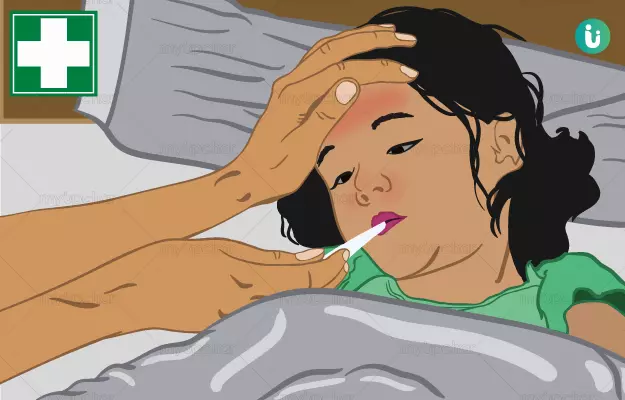Viral fever is a rise in body temperature due to a viral infection. Though anyone can get a viral fever, children and old people are more prone to it as their immune system is typically weaker than that of younger adults.
We have all had fever many times since we were children, but the COVID-19 pandemic has lent all-new attention to fever and how we react to it.
Our body temperature is controlled by a part of your brain called the hypothalamus. It works like a thermostat: when we are healthy, the hypothalamus sets our body to a normal body temperature of about 37°C. But when we’re sick with an infection, our immune system releases chemicals that make the hypothalamus reset your body to a higher temperature.
Fever is extremely common. It is the body’s way of fighting infections. There are some tried-and-tested methods to control fever at home. Some of them are mentioned here:
- Stay hydrated: Having a fever can also cause your body to become dehydrated, which is why drinking plenty of fluids is important if you're running a temperature. The key is to replenish lost fluids. Drinking water is a good option, but a bowl of broth or soup can also be beneficial.
- Avoid the heat: There’s always the possibility of feeling cold or getting chills with fever. But it is important to resist the urge to get under the covers. People can reduce their body temperature by moving to an area with a cooler external temperature. The body will lose heat by convection.
- Rest: The body releases heat as it moves. To help your body cool down, the wise thing to do is rest and wait for the fever to pass. Movement can further increase your body temperature.
Your body also uses up a lot of energy to fight the infection. That is why you feel so tired when you're sick. It is a good idea to sleep and let the body devote its energies to fighting the infection. - Wear light clothes: Remove any restrictive piece of clothing. Heat passes more easily through natural fabrics, such as cotton and linen, allowing heat to escape from the body more easily than in synthetic fabrics such as acrylic and nylon.
- Apply a washcloth to your head, neck and wrists: Dip a clean handkerchief in cold water and apply it on your forehead and other strategic points on the body where the veins are close to the surface—such as the wrists, neck, chest. This can quickly lower the temperature of the blood running through these veins and allow the body to feel cooler.
There is generally no point in taking antibiotics for viral fever unless your doctor suggests it. And while having a temperature is normal, you should seek immediate medical attention if the following things happen:
- Your body temperature is 40°C or higher
- Your fever does not improve even after three days
- You feel confused or are unable to stay awake
- You have symptoms such as hallucinations, vomiting, neck stiffness, skin rash, rapid heartbeat or muscle spasms
- Severe pain anywhere in your body (including severe headache)
- Swelling or inflammation anywhere in your body
Read this article for more detailed tips on what to do in viral fever, what not to do and when to see a doctor.
















